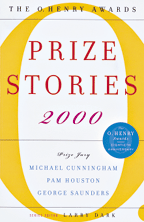Was the whistleblower a wrongdoer?
By Leslie Whitaker

RATS IN THE GRAIN:
The Dirty Tricks and Trials of Archer Daniels Midland
By James B. Lieber L’75.
New York: Four Walls Eight Windows, 2000. 386 pp., $26.00.
Order this book
Even the
most diligent readers of the business pages had a hard time following
the twists and turns of the international price-fixing scandal that
unfolded during the late 1990s involving Archer Daniels Midland (ADM),
the Illinois-based agribusiness giant that calls itself “supermarket
to the world.” Following the exposure of ADM’s meetings with South Korean
and Japanese competitors to set prices and control the supply of two
widely used agricultural additives, the company pleaded guilty to criminal
antitrust violations and agreed to pay $100 million in fines. Ultimately,
ADM Vice Chairman and Executive Vice President Michael Andreas and Division
President Terry Wilson also were convicted of antitrust violations,
while other ADM executives pleaded guilty to fraud and income-tax evasion.
What
made this white-collar criminal saga so confusing, however, was the
bizarre behavior of the highly placed whistleblower—Mark Whitacre, a
biochemist and ADM division president. He served as an FBI informant
for two years but then, a few days after the scandal was made public,
was himself accused of criminal acts. When it got hard to sort out the
good guys from the bad guys, many people lost interest.
Not so attorney
and author James B. Lieber. In his new book about the price-fixing scheme,
Rats in the Grain: The Dirty Tricks and Trials of Archer Daniels
Midland, Lieber goes to great lengths to clear up the confusion.
At first Whitacre was judged by the FBI as a man “with no prior criminal
convictions and no apparent reason to lie.” But once ADM was publicly
accused, the company began to fire back. In a matter of weeks, ADM charged
Whitacre with lying on his resume, graft and, ultimately, with embezzling
millions of dollars. Based on those charges, ADM fired Whitacre, who
attempted suicide days later.
Despite Lieber’s
ability to sift through the facts, many mysteries remain. We learn,
for instance, that Whitacre, now serving a nine-year jail term, maintains
that ADM executives were aware of, and even approved of, the embezzlement
scheme. Since the company did not take action against Whitacre until
after the scandal was made public, it certainly seems plausible. But
government prosecutors have never questioned the retired ADM chairman
and CEO, Dwayne Andreas (Michael’s father), about this or any other
criminal matter—he was exempted from interviews by the Justice Department
as part of the plea agreement. So the author is left with a 1996 profile
of the top executive published by the Washington Post Magazine in
which Andreas tries to explain the delay. Lieber’s conclusion: “There
are only two logical explanations for Andreas’ behavior: either he did
not think the funds were stolen (in other words, they were approved)
or he didn’t care.”
Another mystery
is the credibility of Whitacre, who most certainly is a man suffering
from mental illness. As Lieber admits, “Even after days of intimate
conversation with Whitacre, it was difficult to trust him a hundred
percent.”
Lieber does
a yeoman’s job of laying out the complex series of events that constituted
the various crimes, as well as chronicling the back-and-forth of the
defense attorneys, prosecutors and presiding judge in the trial in which
Michael Andreas, Wilson and Whitacre were charged with federal crimes.
The level of detail can be trying for the reader, but the author makes
a strong case that this piece of American corporate history—“one of
the most important antitrust cases of the century”—should be closely
examined.
To that end,
Lieber raises several compelling questions. Were the punishments doled
out fairly? Whitacre helped to gather remarkable evidence against corporate
criminals here and abroad, yet ended up with a prison sentence three
times as long as his superiors. (At least a partial answer to that question
was handed down by the Appeals Court in September. The court ordered
Judge Blanche Manning to extend the executives’ sentences after finding
that she had improperly applied federal sentencing rules.)
Even more troubling
are the questions Lieber raises about ADM’s political influence. Dwayne
Andreas has befriended numerous presidents, ambassadors, senators, members
of Congress and foreign leaders. At the end of the book is the lengthy
list of the company’s political contributions to both Democrats and
Republicans. Did the company’s influence affect the Justice Department’s
handling of the case? Usually corporations that plead guilty to federal
crime lose their government contracts, Lieber explains. Not so ADM.
Lieber also
notes that during the course of his research many government documents
were withheld. Not everyone’s loyalties were with the company, however.
“In time, I came to understand that the simultaneous providing and withholding
of information represented a government at odds with itself,” Lieber
writes. “One part wanted the law to run its course notwithstanding the
power of the accused. Another sought to protect ADM and do its bidding.”
The most disturbing
question Lieber poses concerns the future implications of the case.
“Whether the final results favor whistleblowers or wrongdoers, deter
or tolerate price-fixing, and ultimately enhance or mock the law, are
hard questions that remain for the reader,” he writes. One closes the
book fearful that should such a crime occur again, the rats would do
just fine.
Leslie Whitaker is co-author of the forthcoming The Good Girl’s Guide to Negotiating (Little, Brown), due out in January 2001.
O’Henry, 4 Penn
Work by Penn alumni highlight the 2000 prize-story collection.
By Kerry Sherin

PRIZE
STORIES 2000: The O’Henry Awards
Edited
by Larry Dark C’81.
New
York: Anchor Books, 2000.
411 pp., $13.00
(paperback).
Order
this book
With three
out of 20 short stories in Prize Stories 2000: The O’Henry Awards
written by Penn alumni—and series editor Larry Dark also being a Penn
grad—suspicions of a fix would be understandable. But Dark, who chose
the volume’s contents from about 3,000 short stories published in 1999
that he read, insists he did not play favorites. Readers already familiar
with John Edgar Wideman C’63 Hon’86, J. Robert Lennon C’92 and Alice
Elliott Dark C’76 (who also happens to be married to him) will know
Dark is telling the truth—and the rest will believe him after they read
the work included in the book.
As
a Penn alumna and unabashed booster of writers at and from Penn, I would
have been inclined to appreciate Prize Stories 2000 for those
three stories alone. Happily, the entire collection turned out to be
fascinating. In his introduction, Larry Dark offers a simple credo for
picking stories: “Good writing engages and entertains readers while
still delivering deeper meaning.” Hard to argue with that, of course,
since it is questions such as how the writer chooses to entertain and
engage her readers, and what she, and we, see as deeper meaning, that
propel us forward as we read, then divide us in matters of taste.
Dark’s
criteria could include the headiest metafiction or Borgesian fable—though,
with notable exceptions, the stories tend toward narratives that entertain
and engage us by realistically re-presenting us to ourselves. The stories
here typically focus on the domestic—the machinations of families, the
beginnings and ends of love and life—and many deliberately stir the
reader to tears. They turn on the moment of recognition, when a human
character is given reason to see himself in a new, often unflattering
light—which then gives readers a chance to see ourselves before and
after in him. (This, an Aristotelian definition of plot, was taken up
by Chekhov: “Man will only become better when you make him see what
he is like.”) But alongside these unabashedly traditional narratives,
one also finds in the book many wildly loquacious narrators, and self-conscious
authorial interventions, and deliberate allusions to short story form—the
marks of metafictional invention and postmodern play. Indeed, it is
the collection’s mix of realism and experimentation that makes it so
much fun to read.
The
first-prize story, John Edgar Wideman’s “Weight,” expertly and movingly
combines both elements. The plot seems simple, even sentimental. A writer
begins a story about his mother, whom he describes as a supreme weightlifter,
a woman who has suffered too many family sorrows and failures yet keeps
her faith, who even prays to God for “more weight.” The writer then
reads this beginning of a story to his mother, leaving out the part
in which he has imagined that she is already dead. The mother chastises
the son for his description of her, and he struggles to understand her
criticism of the story and his own need to foretell her death. Finally,
he recounts the details of her dying and imagines—or remembers—carrying
her coffin.
As
Michael Cunningham, one of three writer-jurors who pick and introduce
three prize-winning stories from the 20 selected by Dark for the volume,
writes, one could mistake “Weight” at first for just “another story
about a heroic mother who dies.” Yet it transcends its potentially sentimental
premise, brilliantly blending tones, languages and storytelling modes.
The reader gets an education: what makes fact fiction, and how do metaphors
work, and why would a man, any man, imagine the worst, especially since
it must eventually happen? Halfway through the piece, the narrator says,
“I’d swallow every stick of dynamite it takes to pay for a Nobel Prize
before I’d accept one if it cost just one of your soft, curly hairs.”
Among other things, “Weight” reminds one that Wideman is good enough
to have to worry about making these kinds of choices.
Lennon’s
story, “The Fool’s Proxy,” has great emotional depth and an unwavering,
evocative visual register. Grant Person has left his family’s ranch
out west at the end of World War II and makes his way east by train.
He is overwhelmed by his family’s legacy of death and self-destruction,
which he may have thought to escape, first by letting his younger brother
go to war in his stead, then by leaving home. Ending up in Atlantic
City—which Lennon describes in vivid, yet somehow sepia-toned images—Grant
finds that he may not be able to outrun the tragedies. Lennon is also
the author of the novels The Light of Falling Stars, which earned
him a Barnes and Noble Discovery Award, and The Funnies; an author’s
note reveals that a version of “The Fool’s Proxy” serves as the opening
chapter to a new novel.
Like
many of the stories in Alice Elliott Dark’s acclaimed collection, In
the Gloaming [“Off the Shelf,” May/June],“Watch the Animals” is
a revealing portrait of upper-class WASPs. The story, told by a first
person-plural narrator—the collective voice of a community of people
who all grew up together, see things in the same way, know how one ought
to behave, etc.—concerns Diana, one of their own, but who betrayed the
crowd with her eccentric behavior, her obsession with animals’ rights,
and her books in which she criticized the stuffy upper class from which
she had come. Now Diana is dying, and the community finds that she needs
them, and they try not to revel in the reversal but can’t quite resist.
Meanwhile, Diana’s dogs, as dogs do, continue to care for her, oblivious
to what is in it for them. Like Dark’s other stories, “Watch the Animals”
displays a deliberate unity of theme and detail, drawing the reader’s
attention at every point to the pack attitude in both dogs and people,
and using fiction to show the reader the moral limits of a certain perspective.
While
none of the other stories in the collection show quite the virtuosity
of Wideman’s “Weight,” nearly all are excellent in some way. The pieces
not by Penn writers range from the raw narrative exuberance of Keith
Banner’s almost impossible love story, “The Smallest People Alive,”
to the poignant, restrained, exquisite variation on Chekhov’s famous
tale in Beth Lordan’s “The Man with the Lapdog.”
There are many other writers deserving of inclusion in this or any prize collection—Lydia Davis, Rick Moody, Annie Proulx, Matt Klam, David Foster Wallace and Penn alumna Jennifer Egan C’85, to name a few. One could also imagine a selection that would include more stories with a wider political, even a global, perspective, or more stories that, like Dark’s, not only reflect human experience but suggest, in form and content, other ways that we, collectively, might live. This collection takes a specific—even narrow—cut of contemporary writing Still, story to story, the book is marvelous, in part because it reminds us that the contemporary short story, thanks both to writers we don’t know and some we do, is in the process of changing, right now.
Kerry Sherin C’85 is director of the Kelly Writers House.
BRIEFLY NOTED
A selection of recent books by alumni and faculty, or otherwise of interest to the University community. Descriptions are compiled from information supplied by the authors and publishers.
THE TARIM
MUMMIES:
Ancient China and the Mystery of the Earliest Peoples from the West
By J.P.
Mallory and Victor H. Mair, Faculty.
New York: Thames
& Hudson Inc., 2000. 352
pp., $50.00.
Order
this book
The best-preserved mummies in the world are not found in Egypt or Peru but in the museums of Xinjiang, the westernmost province of modern China. For thousands of years the occupants of the barren wastes and oases that would later become the Silk Road buried their dead in the sands of the Taklimakan, the second greatest desert on Earth. This arid environment, preserving body and clothing, allows an unparalleled glimpse into the lives and appearance of a prehistoric people. The faces of the mummies are not those of ancient Chinese but rather those of Indo-Europeans who settled in the Tarim Basin on the western rim of ancient China some four millennia ago, 2,000 years before West and East recognized each other’s existence. This study describes the discovery of these people and reveals the latest attempts of Chinese and Western scientists to explain their origin and determine their ethnic identity. Mair is a professor of Chinese who has been instrumental in bringing the mummies to the notice of Western scholars. Mallory is an archaeology professor at Queen’s University, Belfast.
REDEEMING
MEMORIES: A Theology of Healing and Transformation
By Flora
A. Keshgegian CW’70.
Nashville,
Tenn.: Abingdon Press, 2000. 280
pp., $23.00.
Order
this book
This book draws attention to those who have suffered childhood sexual abuse, those in the Armenian genocide and the Jewish Holocaust, and those historically disinherited peoples and groups, especially women and African Americans. With such human memories of suffering in mind, Keshgegian, an Episcopal priest, insists that redeeming memories is the purpose and mission of the Christian church. She challenges the reader to understand that the redemptive potential of the memory of Jesus Christ will be made known and realized by the capacity of that memory to hold and carry not only the story of Jesus, but of all those who suffer, struggle, live and die. She invites the reader to understand Christianity as a saving memory. Keshgegian is assistant professor of systematic theology at the Episcopal Theological Seminary of the Southwest in Austin, Texas.
THE TEN
GIFTS: Find the Personal Peace You’ve Always Wanted Through the Ten
Gifts You’ve Always Had
By Robin
L. Silverman CW’75.
New York: St.
Martin’s Press, 2000. 240
pp., $21.95.
Order
this book
When Robin
Silverman and her family became victims of the great flood of 1997 in
Grand Forks, North Dakota, she knew it would take more than motivation
and hard work to repair her heavily damaged life. So she went searching
for a new foundation of personal peace that she could both use and share
with others. The Ten Gifts chronicles Silverman’s discoveries
of the 10 “spiritual abilities” she used to create a new and better
life after the flood: Faith, Love, Dreams, Courage, Unity, Joy, Trust,
Character, Thanks and Intention. The book offers new definitions and
fresh uses for familiar spiritual concepts essential to
anyone who has suffered a life-changing event, like divorce, illness,
financial reversal, job loss and more. Silverman is a motivational speaker,
consultant and author. She has written A Bosnian Family, the
story of refugees from the war in the former Yugoslavia, and the audiotapes
Love From Home and Relaxation for Busy People. Her stories
are featured in the bestselling Chicken Soup for the Unsinkable Soul.
BIOTECHNOLOGY
IS MURDER
By Dirk
Wyle (Duncan Haynes Gr’70).
Highland City,
Fla.: Rainbow Books, 2000. 276 pp., $14.95.
Order
this book
One week before receiving his Ph.D. in pharmacology, Ben Candidi is offered a high-paying, four-day consulting job with a biomedical venture capitalist, Brian Broadmoore, who has come to Miami on business. Broadmoore’s company has an option to buy 90 percent of the stock of Biotech Florida for $10 million and a commitment to spend another $10 million in developing its three anti-cancer compounds from marine sponges. While conducting a scientific audit, Ben finds that Biotech’s research data checks out, but its key personnel do not: The president is a gruff construction tycoon. The head scientist seems knowledgeable but dresses like a fashion model with an attitude to match. And the inventor, who founded the company that was bought up by Biotech, is defensive and uncommunicative. On the third day of the audit, he is discovered dead. Should Ben advise the Boston company to buy, or to walk away and cut its losses? Dirk Wyle is the pen name for real-life research pharmacologist Duncan Haynes, who weaves into his second murder mystery authentic details about the commercialization of scientific technologies and the patent process. He wrote Pharmacology is Murder and is working on two more Ben Candidi mysteries.
AN OUT-OF-BOAT
EXPERIENCE:
… or God is a Rower, and He Rows Like Me!
By Peter
Mallory C’67.
San Diego Writers’
Monthly Press, 2000. 263
pp., $18.95.
After more than 40 years of rowing and coaching at every level, full-time accountant and first-time author Peter Mallory found himself faced with more questions than answers: questions about the rowing technique, the equipment, the rowers and their motivations. These questions haunted the 55-year-old former Penn lightweight, and in the end, launched him on a self-described Homeric odyssey in search of inner peace and the perfect rowing technique. The voyage culminated in An Out of Boat Experience. Mallory, who now lives in Del Mar, Calif., won four gold medals at the Canadian Henley and four silver medals at the U.S. National Championships.
THE MUSICAL
EDGE OF THERAPEUTIC DIALOGUE
By Steven
Knoblauch C’70.
Hillsdale,
N.J.: The Analytic Press, 2000. 184
pp., $33.50.
Order
this book
A chronically striving self-made man addresses his therapist in the deeply resonant tone of authority, but the therapist notices that at the edge of his voice there is a raspiness that sounds like someone holding back tears. A female patient pauses, and suddenly, the coolly superior tone of a black professional woman embattled in a white male world gives way to the soft, teasing voice of a little girl—equally suddenly, the topic of the session has shifted to women, women’s bodies and pregnancy. Such nuances and shifts in the music of the patient’s voice have long been familiar to clinicians. But how, asks Knoblauch, a former jazz musician, can therapists make systematic sense of this music and assess the opportunities it provides for deepened therapeutic engagement? In his book, Knoblauch presents a model of “resonant minding” in which the musical elements of speech became a major source of information about unconscious communication and action. The author is a faculty member and supervising analyst at the Institute for the Psychoanalytic Study of Subjectivity, the Institute for Contemporary Psychotherapy and the Psychoanalytic Psychotherapy Study Center, all in New York City.
A SUCKER’S
DIARY
By Matthew
Katzman (pseudonym) WG’92.
1st Books Library,
2000. 197 pp., $13.95.
Order
this book
This book chronicle’s the disastrous personal experience of the author—a Wharton School graduate too embarrassed to reveal his true identity—with stock-market gambling addiction. While working as a transportation and logistics analyst, he traded money borrowed through credit cards in the stock and options market and lost an amount almost twice his gross annual salary. A Sucker’s Diary exposes the emotional roller coaster of a compulsive day- trader and the possible social implications of the explosion in online day-trading. Katzman, who has so far paid off more than two-thirds of a $130,000 debt, now works in the Princeton office of a full-service brokerage firm, where he advises private clients on risk management.
YOGA ZONE
INTRODUCTION TO YOGA:
A Beginner’s Guide to Health, Fitness and Relaxation
By Alan
Finger and Al Bingham C’92.
Three Rivers
Press, 2000. 224 pp., $17.00.
Order
this book
As people search for inner peace amid increasingly hectic lives, the practice of yoga continues to gain popularity. Yoga means to yoke, or to bring together, the various aspects of the self—body, mind and spirit—and while the physical and mental benefits are impressive, to many people the idea of yoga is intimidating. This book tries to show how easy it is to start a yoga practice. It includes a history of the different types of yoga, including an explanation of the ISHTA yoga that Finger created, which is taught at his Yoga Zone studios. Explanations for the postures are accompanied by illustrations and suggested modifications for people of different fitness levels, and there is a special section on relaxation and meditation. Bingham is a senior Yoga Zone instructor.
A GREAT
CIVIL WAR: A Military and Political History, 1861-1865.
By Russell
F. Weigley Gr’56.
Bloomington,
Ind: Indiana University Press, 2000. 648 pp., $35.00.
Order
this book
This book offers a new interpretation of the events which continue to dominate the American imagination 150 years after the Civil War’s end. Weigley puts the reader on the battlefields as he discusses strategies and tactics, the political ramifications of military decisions and the importance of individual soldiers and officers. He points to the inability of both sides, but particularly the South, to prioritize campaigns and thus mold a rational strategy for the war. He argues that the South, despite its powerful defense, was ultimately ambivalent about leaving the Union, and gave up more easily than might have been expected. Weigley is an emeritus history professor at Temple University and the author of numerous books of military history.
MR. TRAVEN,
I PRESUME?
By Michael
L. Baumann G’56 Gr’71.
1st Books Publishing,
2000. 105 pp., $10.85.
Order
this book
In this newly published study of the mysterious 1930s author, Baumann makes the case for B. Traven having been at least two persons: The first, the author of the core B. Traven works, such as The Treasure of the Sierra Madre, was an unknown American with an American sense of humor as well as a thorough grasp of American idioms and the language used by workingmen and sailors. The second was a man who hardly knew English, who arrived in Mexico in 1924—from Germany. Baumann concludes that this man was among other things, a plagiarist, a racist and an “inveterate prevaricator.” A B. Traven scholar for more than 30 years, Baumann is a professor emeritus of American literature at California State University-Chico.
THE SCIENCE
AND ART OF LIVING A LONGER AND HEALTHIER LIFE
By Carl
E. Bartecchi, M.D., M’64 and Robert W. Schrier, M.D.
Dallas: Emis
Medical Publishers, 2000. 270
pp., $14.95.
Order
this book
Physicians Bartecchi and Schrier have worked together for more than 20 years, researching the effects of tobacco use. In this latest edition of their medical-advice book, they share facts and statistics about the risks of smoking, discuss the management of diseases such as high blood pressure and diabetes, critique alternative medicine, and extol the benefits of proper diet and exercise. Bartecchi has practiced internal medicine for more than 30 years and is Distinguished Professor of Clinical Medicine at the University of Colorado School of Medicine.
SQUIRRELS
AT MY WINDOW:
Life With a Remarkable Gang of Urban Squirrels
By
Grace Marmor Spruch G’49.
Boulder, Colo.:
Johnson Books, 2000. 187
pp., $12.00.
Order
this book
Even for a woman as sensitive to wild animals as Grace Spruch, the arrival of a squirrel inside her Greenwich Village apartment one morning came as something of a surprise. She had always loved the squirrels she saw in Washington Square Park, but she never met one so forward as the one climbing up her rubber plant. Spruch didn’t know it then, but this was the beginning of a strange and wonderful relationship. Gradually, other squirrels began to climb the fire escape to the Spruchs’ fifth-story window. Since Spruch is a scientist as well as an animal lover, her observations gain a special force and precision in this popular science book, first written in 1983 and recently released in paperback. While elucidating the habits of squirrels, Spruch, a professor of physics at Rutgers University, has created a loving yet unsentimental account of a fascinating episode in the natural history of a large city.
THE NAVAL
WAR COLLEGE
By Lionel
D. Wyld G’50 Gr’59.
Charleston,
S.C.: Arcadia Tempus Publishing Group, 2000. 128
pp., $18.99.
In 1833, Commodore Stephen B. Luce established the Naval Training Station on Coaster’s Harbor Island in Newport, which became the forerunner of the modern recruiting stations for enlisted men in the U.S. Navy. The next year, he established the Naval War College, the first professional naval-education center of its kind in the world. This book explores the history of one of the nation’s most prestigious service schools. The author is a director of the Navy League of the U.S., Newport Council and an associate member of the Naval War College Foundation.
HITMAN’S
RUN
Directed
by Mark Lester.
Written
by Eric Barker C’94.
Avalanche
Home Entertainment, 1999. Rated
R. One hour, 33 minutes. $21.21.
After double-crossing the crime family he used to work for, a hit man must enroll in the Witness Protection Program. Unfortunately, he isn’t very well protected. From the director of Commando, this film stars Eric Roberts, Damian Chapa and Esteban Louis Powell. Barker, a screenwriter, lives in Los Angeles.




